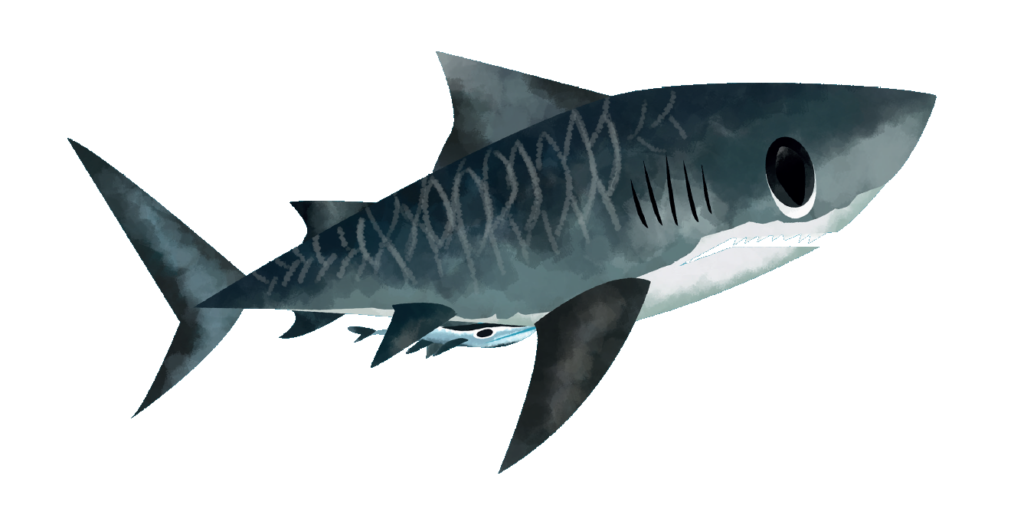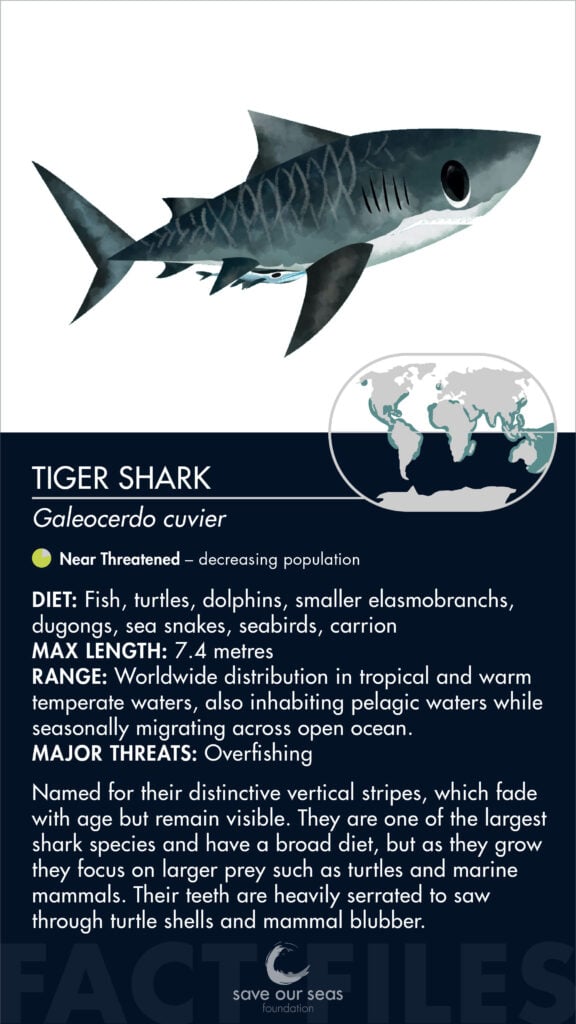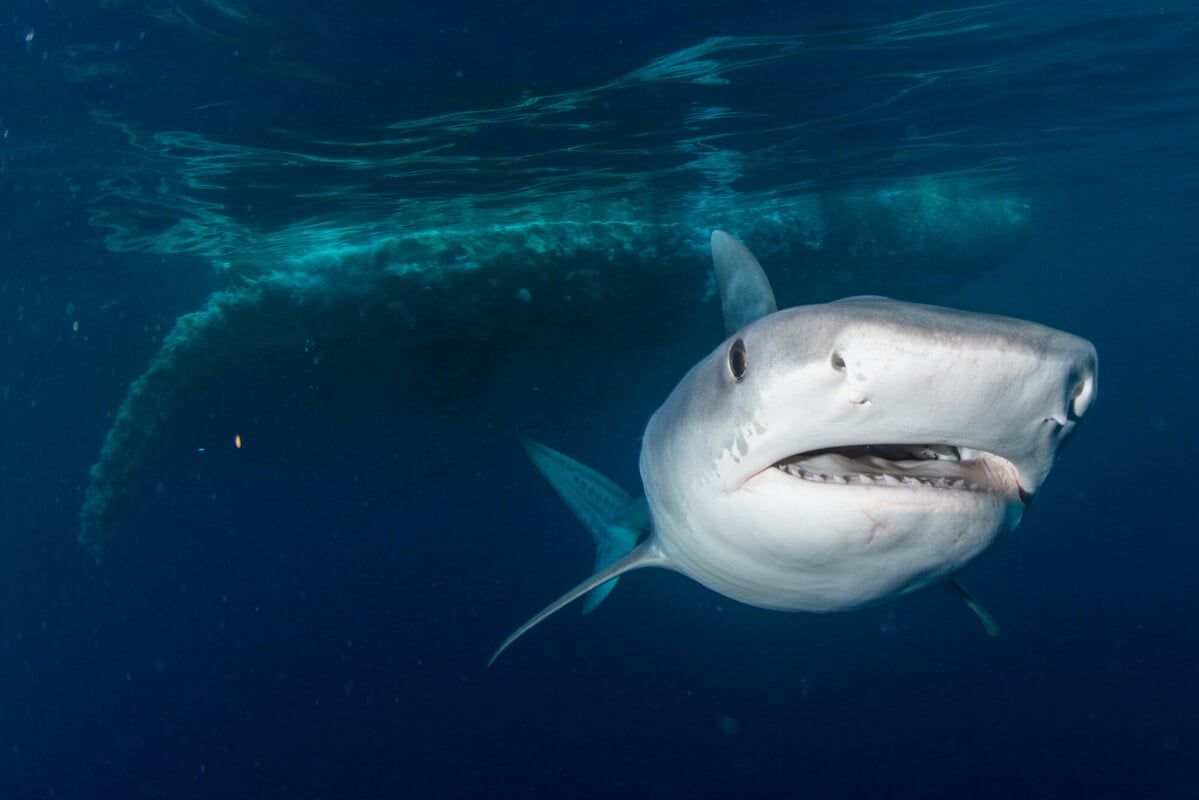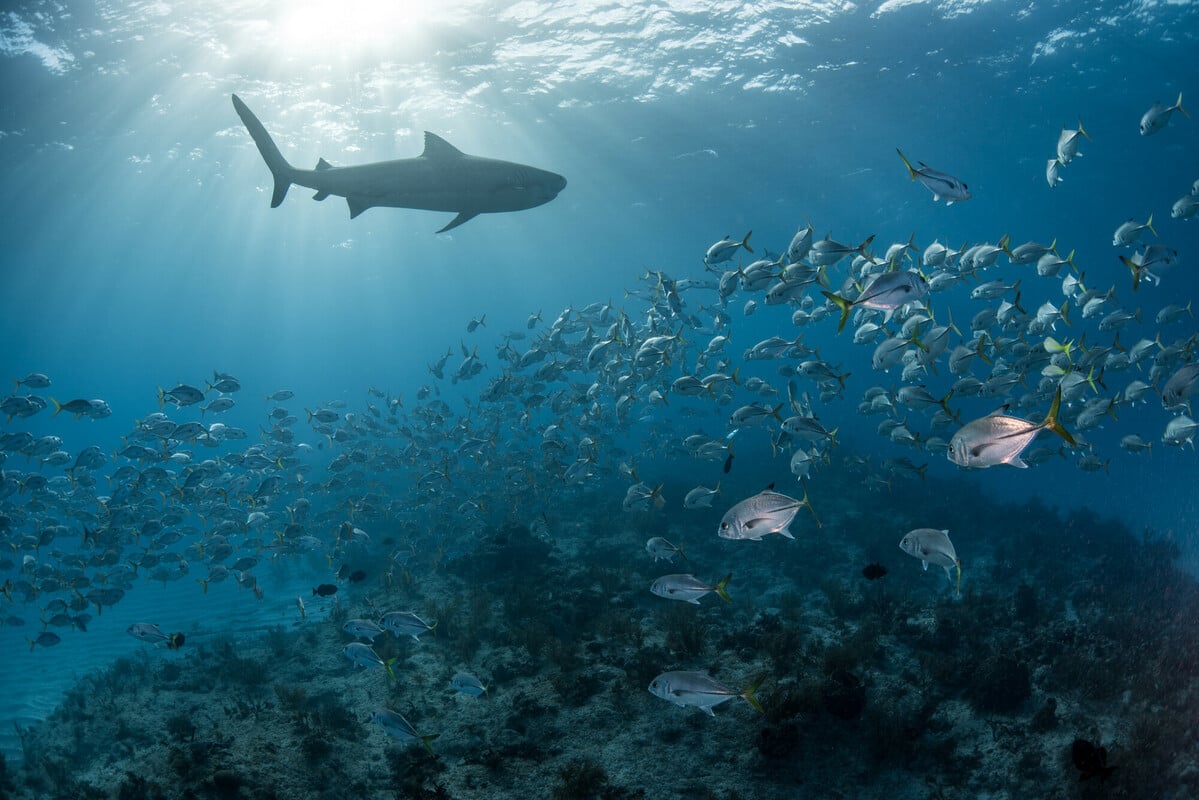Tiger shark
Galeocerdo cuvier



Tiger sharks get their name from the distinctive vertical stripes, which fade with age but remain visible. They are one of the largest shark species and have a broad diet, but as they grow they focus more on larger prey like turtles and marine mammals. Their teeth are heavily serrated and allow for sawing through hard turtle shells and tough mammal blubber.
Identification
Tiger sharks are easy to recognise from the large vertical stripes down their sides. They also have a very blunt, flattened snout that gives their head quite a square appearance. They have large eyes and highly curved, heavily serrated teeth.

Special behaviour
Tiger sharks may play very important roles in the ecosystems they occupy. For example, their presence has been shown to prevent green turtles from overgrazing seagrass beds, resulting in healthy populations of sharks and turtles critical to the structure and function of seagrass ecosystems, including their role as carbon sinks. Tiger sharks have also been shown to display repeated, long-distance migrations that take them between coastal tropics in winter and temperate open ocean thousands of kilometres away in summer. Individuals will even return to the same area of open ocean each year, despite long migrations in between, indicating impressive navigation skills. It is suspected that migrations like this might be made to coincide with abundant prey availability, such as turtles. Another interesting behaviour is foraging on fledgling albatross in Hawaii, where tiger sharks prey on birds resting on the ocean surface.
Reproduction
Tiger sharks are the only species in the family Carcharhinidae that are ovoviviparous (all the others are viviparous). This means they grow their embryos internally and nourish them from a yolk sack before giving birth to live, independent young. After a gestation period of 15–16 months, a female may give birth to up to 82 pups, but more typically around 25–30. Pups are born at 0.5–0.9 m long, with subsequent age at maturity varying considerably between studies (4–13 years).
Habitat and geographical range
Tiger sharks are found worldwide in tropical and warm temperate waters. Although mainly coastal in coral reef and seagrass habitats, they also inhabit pelagic waters while seasonally migrating across open ocean.

Diet
Tiger sharks have an incredibly varied diet, and have a reputation for trying almost anything. However, larger individuals show a preference for marine reptiles and mammals. As tiger sharks grow, they increasingly favour turtles as prey, with their serrated teeth easily cutting through the shell. They will also feed on dolphins, dugongs, sea snakes, sea birds and whale carcasses, alongside more regular bony fish and cephalopods.
Threats
Overfishing is the primary threat for tiger sharks, as they are regularly taken as target and bycatch in commercial and artisanal fisheries (although only infrequently in offshore tuna long-liners). They are also a preferred target of recreational fisheries, and are often caught in beach safety programmes. While not as severe as many other shark species, tiger sharks have experienced population declines in the region of 30% globally, with further declines anticipated. As such they are considered as Near Threatened by the IUCN.
Relationship with humans
Tiger sharks have long been exploited for a variety of products, including their meat, fins and oil, in artisanal and commercial fisheries across the globe. They often have strong cultural significance – for instance in Seychelles there is a particular curry made from the skin of a tiger shark’s head. In Hawaii, their skin has also long been used to make traditional drums. They are also popular in recreational fishing circles. There is increasing demand from tourists seeking encounters with them while diving, with many ecotourism operators establishing tiger shark dives in locations such as The Bahamas, South Africa and the Maldives. Although ultimately still rare, they are second only to the white shark for the number of bites they inflict on people.
Fun Facts
Tiger sharks are famous for eating almost anything from fish to turtles, dolphins, sea snakes, other sharks, and even non-food items including metal, plastics and refuse bags.
They may have up to 82 pups in a single litter, although more usually have 25 to 30.
They are able to migrate thousands of kilometres between winter pupping grounds and summer foraging areas with impressive accuracy, indicating impressive navigation skills.
References
David A. Ebert. et al, 2021, Sharks of the World: A Complete Guide.
IUCN Red List of Threatened Species, Tiger shark: Galeocerdo cuvier
Florida Museum, 2018, Galeocerdo cuvier
Oceana, 2021, Tiger shark: Galeocerdo cuvier







